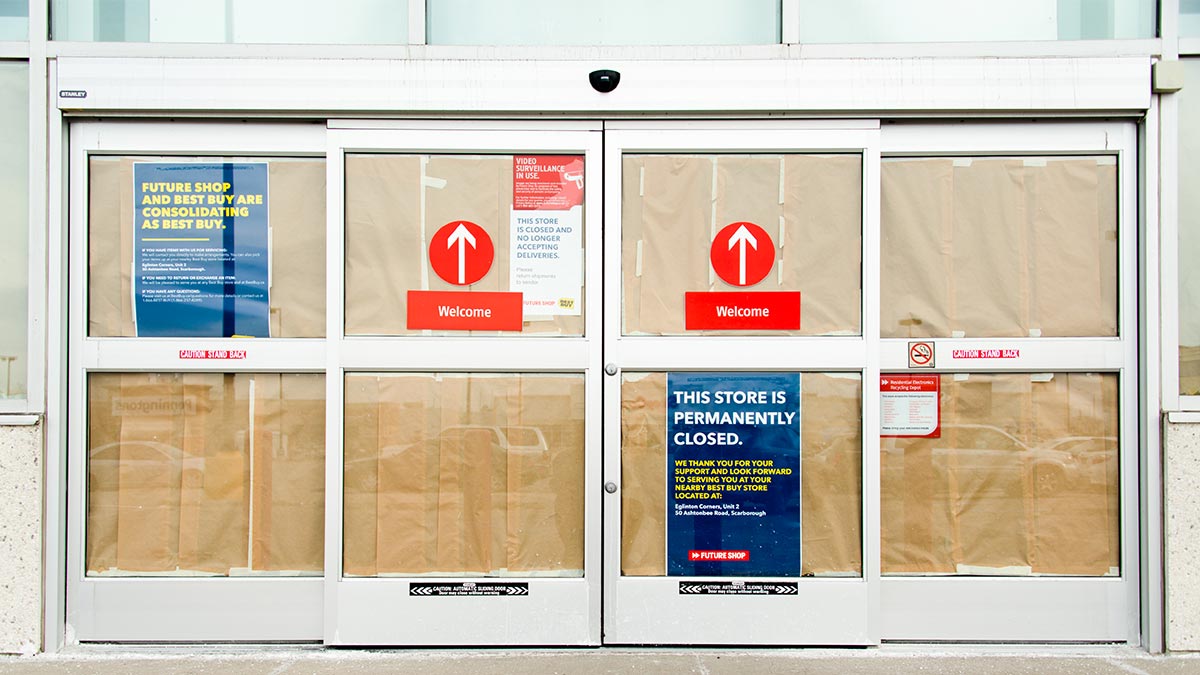Franchising, retail, business

21/07/2015
When The Gap recently announced its plans to close 175 of its 675 stores in North America, it joined a number of other retail chains — including Staples, Office Depot, Target, and Radio Shack — that have been or soon will be shuttering a slew of outlets for one reason or another.
A major challenge for all retailers is managing the closures in a way that maximizes revenues and profits. In our research, we have found that retailers often could handle closures much better than they do.
In retailing, most products, stores, business units, and even firms go through a life cycle of birth, midlife, and death. Our studies of a wide range of retailers have found that companies often have the most difficulty managing death. Managing death more effectively can provide numerous benefits: It can boost profits significantly, lower the cost of capital, and reduce complexity in operations, which can improve the performance of concepts that are in the early and midlife stages.
When retailers liquidate stores, managers must quickly make a series of decisions, since the duration of a liquidation sale is limited by law to 60 or 90 days in many jurisdictions. They include:
Forecasting demand and setting a markdown level or price for each store for every day of the liquidation. This is no easy task when the closures involve hundreds or thousands of stores.
Figuring out at which of the targeted stores they should sell the collective inventory that’s going to be liquidated. There are often substantial differences in “multipliers” of stores being liquidated, with some generating much higher revenues during liquidation relative to the revenues that they generated during the same period the prior year. Since inventory transferred to a high multiplier store may sell at a higher price, retailers should forecast the multiplier during the liquidation in order to transfer inventory from stores with low multipliers to those with high multipliers if there’s enough time to move the inventory.
Deciding when to close a store. While legal restrictions set an upper limit on the length of a liquidation, managers may close stores early to save operating expenses.
Over time, retailers have identified and adopted many innovative ideas to manage these complex tasks. (There are individuals — and even firms — that specialize in liquidations.) During liquidation, retailers can reach new demographics and markets by using bold signage and unconventional advertising methods such as “sign-walkers.” On a year-over-year basis, stores undergoing liquidation often earn more revenue during liquidation than during Black Friday weekend or other high demand periods.
In spite of the industry’s sophistication, we have identified numerous ways in which net recovery rate (the store’s revenue minus its operating expenses) can be improved by around 5%. Given that billions of dollars of retail inventory are liquidated annually in the United States, this is a big number.
In our research, we found that retailers often discount too deeply toward the end of the liquidation in order to sell off the entire inventories of the stores in question. They would be better off retaining the product to sell in another market or just donating it to a charity. Managers also frequently did not discount deeply enough early in a liquidation. Further, managers often transferred much less inventory from low-multiplier stores to high-multiplier stores than they should have, and managers should have shut stores sooner than they did. By systematically making pricing, inventory, and store closing decisions, our mathematical model reveals these biases in managers’ decisions.
Bank of America, JPMorgan Chase, PNC Bank, Wells Fargo, and others that offer loans collateralized by a retailer’s inventory base the amount they are willing to lend and the terms on the retailer’s proven ability to liquidate inventories effectively. So as the liquidation value of the assets in question increases, so does the amount a lender will provide in return for a given amount of collateral, thus lowering the effective cost of capital for retailers.
For retailers such as Dillard’s, Neiman Marcus, Rite Aid, and Whole Foods, inventory-based loans are an important source of capital. Because of the security provided by inventory, these loans do not carry the financial covenants and investment limitations of cash-flow loans. This provides retailers more flexibility in managing the number of their outlets — since an inventory-based loan scales with a retailer’s inventory and is less sensitive to a retailer’s cash flow. Inventory-based lending also makes it easier to carry out transactions such as leveraged buyouts.
Since products, stores, and retail concepts have life cycles, companies should be as adept at managing the death of each of these as they are at managing birth and mid-life. Excelling at managing death will allow retail firms to constantly renew themselves and, ultimately, thrive.
Fonte:https://hbr.org/2015/06/shutting-down-stores-doesnt-have-to-be-bad-for-business?sf39499000=1#